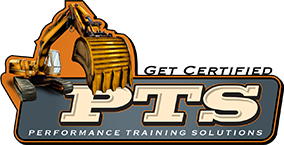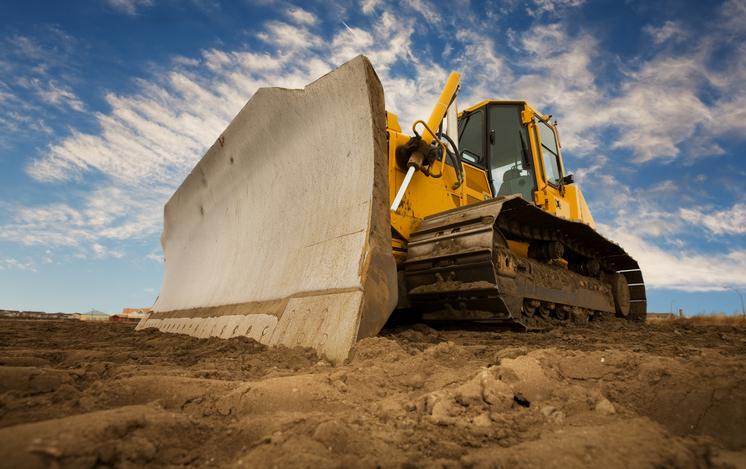They’re big, powerful, and iconic symbols of heavy equipment. By enrolling in a bulldozer training school, you’ll learn how to operate one of the staple pieces of heavy machinery used in construction, mining, road building, and much more.
Much like the excavator, the bulldozer is an essential component of any substantial construction project. But, when were they developed? How long have they been implemented as key tools? What are the essential parts? Heavy equipment types all feature designed strengths; what sets the bulldozer apart?
Today we’ll go all-in on bulldozers, and how learning to operate one can open up paths to more rewarding employment.
Bulldozing Through History
The first designs of a bulldozer are traced back to the early 1920s, as the piece of heavy machinery was first conceived by farmers looking for more efficient ways to clear land and prepare it for planting. In 1923, farmer James Cummings and draftsman J. Earl McLeod issued what were the first public designs for the bulldozer. On Dec. 18, 1923, the pair filed U.S. patent #1,522,378 (later issued on Jan. 6, 1925) for an “Attachment for Tractors.”
The first produced bulldozers closely followed the ‘Attachment for Tractors’ moniker stated in the patent. Those first bulldozers were simply adapted from existing Holt farm tractors that were used to plow fields. The versatility of the machinery, however, was quickly realized. Operating on heavy tracks, the bulldozer soon became essential for working on soft ground for tasks such as logging and road building. Their utility was adapted and their design contributed heavily to the development of the armored tank which changed battlefields starting in World War I.
For many years those tracks — the threaded belts or chains along the right and left sides of the vehicle — were one of the defining features of the equipment. The tracks provided excellent ground-holding capability and mobility through rough terrain. When you don’t have a road, you use a bulldozer to make one. Extra-wide tracks were developed to help distribute the bulldozer’s weight over a larger area, and thus decrease the ground pressure, to allow the machinery to not sink when atop sandy or muddy ground.
Today, however, you can find some bulldozers using large wheels and tires instead of track mechanisms. The mobility benefits remain, but with tires, the machinery can now be used in more finished areas without the potential for damaging the terrain and the simpler conveyance mechanism is less prone to breakdown issues. With the right bulldozer training school, you’ll be instructed on how to use either type.
Are you prepared? Learn how to make the most out of ‘layoff season’ on our blog.
Tools of the Trade
The bulldozer is a blunt implement. You don’t use one for delicate, or precision-needed tasks. The tools commonly found on bulldozers, besides the rugged conveyance system, reflect this fact. The one thing every bulldozer has and uses is a massive blade mounted to the front of the machinery. This is what moves the earth or other debris, pushes rubble out of the way, and levels the ground for roads and crop-growing fields. The other common addition to a bulldozer is a ripper, mounted on the rear of the vehicle.
The blades used by bulldozers are generally classified into one of three types:
- The straight blade (S-blade), which is the shortest (top to bottom) and does not feature side wings. It’s used for stripping and ditching and is often employed for fine grading work or for use with fine-grained and medium to hard material.
- The universal blade (U-blade) is the most common blade type in use generally, and has a curved shape with large side wings; it’s used for pushing and other material handling needs.
- The semi-universal blade (S-U blade) is more narrow and only slightly curved with moderately sized side wings. Its ideal tasks include backfilling, crowning, and moving large rocks.
The Ripper is a long, claw-like device mounted on the back of the bulldozer and comes in two styles: a single large shank, or as a group of multiple shanks. Rippers are used to break up land to allow agriculture to grow or to break down rock and earth to be moved. Ripping rock breaks the ground surface rock or pavement into smaller pieces that are easier to handle and transport away. With agricultural ripping, a farmer breaks up rocky or very hard earth (or stumps), which is otherwise un-plowable, to farm it.
Want to know more about PTS course offerings? Get the information you need here.
PTS is the Bulldozer Training School You Need
Bulldozers remain a vital part of many industries and having the required training to operate them will open up many opportunities for employment. You’ll see their use in road-building projects, construction operations, at mining quarry sites, performing in forestry operations, general land clearing, and in any other project that requires a highly mobile, powerful, and stable piece of earth-moving equipment.
And heavy equipment operators still command family-supporting salaries. Across all experience levels and types of equipment, data from 2021 indicates that roughly half of all heavy equipment jobs will have an annual salary ranging from $54,000 to $74,000.
Performance Training Solutions is the best heavy equipment operator school in the Midwest and provides accessible training to get you set up for a new career quickly. We offer two, three-week, 120-hour courses in heavy equipment operations. For bulldozer operation certification, you’ll need to complete both courses.
- Heavy Equipment Operator 1 is an entry-level course and covers the knowledge and skills required to obtain employment as a skid steer, wheel loader, compactor, backhoe, or articulated off-road dump truck operator.
- Heavy Equipment Operator 2 follows up on that initial training and opens the door to employment as an operator for bulldozers, scrapers, excavators, and motor graders.
With PTS you can learn to operate a bulldozer or any of more than a dozen other pieces of heavy equipment. You’ll acquire the skills needed to further your job opportunities and prospects.
Connect with our admissions team today to get a free tour of our Columbus, Ohio facility. Complete the tour and earn a $500 Tuition Reduction Scholarship.
 Proudly Serving Veterans
Proudly Serving Veterans

